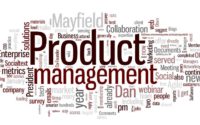The Growth Initiative that Increased our Activation Rate by 200%

The Growth Initiative that Increased our Activation Rate by 200%
In a previous role, I was the Product Manager responsible for driving growth and subscription signups for a direct to consumer Mobile app. I did market research, gathered customer insights, priced the product competitively, created a great UI and applied learnings from market research and customer feedaback to have the right feature set. The product was launched and I was excited to see the user adoption.
Onboarding the Users
We launched direct marketing campaigns and while we got good conversion on our ads and got users to install the app, the subscription activation rate was very low. Only about 10% of the users were using the app after the 1st day and we were losing 90% of the users. We could not continue to spend money acquiring these users just to lose them without even recovering the cost of acquisition.

When I looked at the drop off numbers, it was clear that we could not sustain the business and this was something we needed to improve our product to grow sustainably. As a Product Manager, I was ultimately responsible to improve user onboarding and improve subscription signups. I brought the situation to our executive team and got their buy in to prioritize fixing the dropoff. This was shared with the entire company during weekly all-hands so that I could get the team support needed to dig deeper.
How We Defined Success
I scheduled weekly meetings with the cross-functional team including Acquisition Manager, Data scientist, lead Android engineer and our designer to focus on the initiative. During the first meeting, we agreed to the following course of action.
Objective: Increase the conversion of users who install the app into subscribers
Key Metric: % of subscribers vs app installs
Process: Weekly experiments and results review
Mission: To convert more users into subscribers by focusing on the following:
1) Identifying the benefit that user gets from the app
2) Clearly communicating the Value proposition to the user
2) Connecting the user to experience the value proposition as soon as possible after app installation
Steps to achieve Objective: A/B test new ideas and onboarding flow post app installation based on best practices and our knowledge of customers and their needs.
How We Measured Success?
Our first step was to make sure we have the data available to measure our success. We needed to set up following tools to achieve this.
Customer Insights
We needed to be able to monitor every step of the funnel that user goes through and measure dropoff at each point. We used Amplitude to collect the event data from the app. For each page that was shown to the user and action taken by the user, I defined events and attributes so that we can fully track all interactions.
A/B Testing
Ideally, we would have used A/B testing tool such as Optimizely or LeanPlum but we did not have any set up at that time. So I developed something scrappy internally for the short term until we could get a more robust A/B testing tool. I used Android ID of the device to show one variation to users with ID ending in an odd number and another version to users with ID ending in an even number. That helped us measure the difference between two versions that users see and quantify which version performed better.
Dashboard
The last thing we needed was to collect and combine all the data to create a dashboard so we could measure our success. Our data scientist took this challenge and within the first week, we had Tableau dashboard ready to help us measure our success.
Planning and Execution
Once we had these tools set up, we were ready to test new flows. We started with questions about why the users were dropping off at the activation step. We used qualitative and quantitative data to identify possible causes. We brainstormed some ideas and created some hypothesis that could help in explaining the drop-offs. Next, we came up with some experiments to validate or invalidate our hypothesis. We prioritized these ideas based on ease of implementation and potential impact on improving the conversion.
Now it was time to implement our first set of tests and communicate the results at the weekly meeting that week. The entire team was kept in loop to ensure everybody was in sync and other teams did not make any changes that could interfere with the tests. Every week we reviewed results during our weekly meeting and determined the next set of tests to run the following week. We tested everything from value proposition to sequence of pages, content and even button text and colors. After a few weeks of tests, we started seeing significant improvements in customer activation.
After about 10 weeks, our subscription conversion rate went up by 200%. This was great and provided us much better ARPU to sustain and grow our business.
Growth Experiment Takeaways
User conversion can be Tricky: Since it is at the intersection of user acquisition, it is not always easy to determine where the issues lie. But I learned that there is so much to be gained by making small improvements. Here are some of the learnings from our conversion experiments.
Deliver the Aha Moment (AKA Magic Moment): A Key step in user onboarding is to identify one feature that delivers key value proposition of your app and expose users to that feature as soon as possible.
Data is Your Friend: Its easy for problems to hide under the hoods and looking at the big picture doesn’t always show how actual product is performing. Slicing and dicing the data will reveal problems that can help improve the user experience and engagement.
Rapid Experimentation: It really helps to prioritize tasks based on key business goals. Adding new features is great but tweaking the features/ flow to optimize is critical to the success of the product.
Alignment of Goals: make sure all teams are excited about optimizing for growth and are willing to make sacrifices and invest time in helping achieve that goal.
If You cannot Measure It, You cannot Improve It: You really need the right tools to test and measure the success of your experiments. Without the tools, it’s shooting in the dark, which most likely is going to be a crapshoot.
This is one of many lessons I learned while driving engagement and growing users for my products. If you have any comments or feedback to share, please drop me a line or leave comments below.


